Results
-
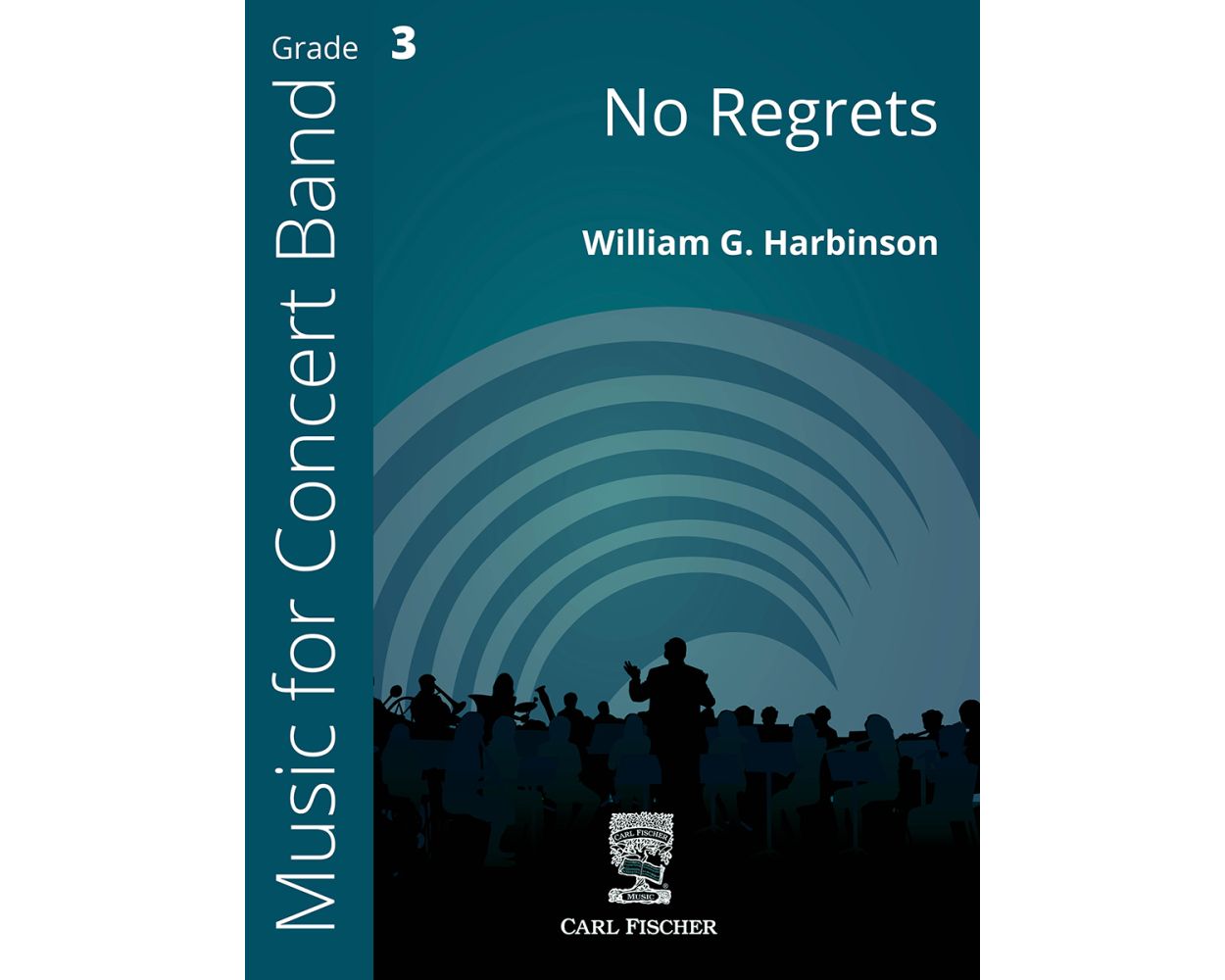 £64.00
£64.00No Regrets
This adventurous piece opens with a burst of sound that foreshadows the spirited nature of the composition. The percussion section plays a leading role through a quiet, but restless, expansion of the opening motive. A stately brass chorale is followed by hauntingly quiet passages, transitioning to an aggressive outburst of percussion and winds. Every section will experience exciting moments leading up to the energetic coda the concludes in a major key.
Estimated dispatch 12-14 working days
-
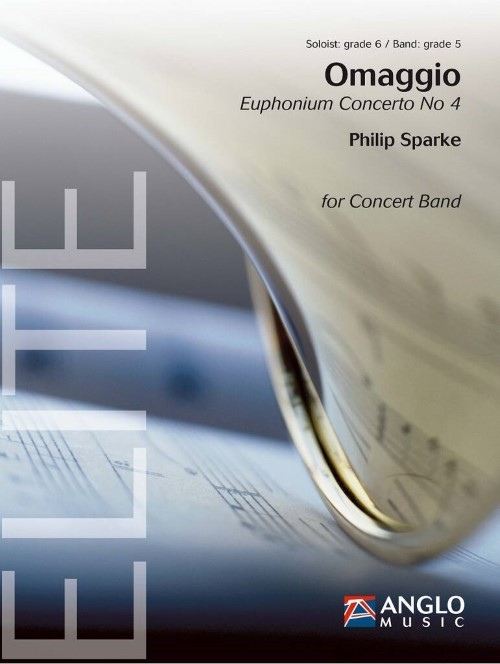 £206.99
£206.99Omaggio (Euphonium Concerto No.4) (Euphonium Solo with Concert Band - Score and Parts) - Sparke, Philip
Omaggio was commissioned by Steven Mead in celebration of his 60th birthday and in memory of his father, Rex. He gave the premiere of the brass band version in Rome in March 2022, accompanied by the Italian Brass Band conducted by Filippo Cangiamilla. The concert band premiere took place on 6th July that year as part of the 2022 Spanish International Tuba Euphonium Conference, accompanied by the Banda municipal de msica de Malaga.The concerto is set in 3 continuous movements, which are united by a recurring syncopated interval of a fifth. The first movement, Fantasia, opens with this motive accompanying an extended monologue for the soloist. This is followed by a lengthy bridge passage by the band, which is eventually joined by the soloist, who guides the music back to the opening soliloquy, leading to an energetic central section. This develops until the opening material again returns to introduce the second movement, Ballad, which revolves around an expressive melody for the soloist, interspersed by accompanied cadenzas. The third movement, The King Triumphant, pays homage to Steven's late father, Rex, and its title alludes both to Rex's name (Rex being Latin for king) as well as his love of Eric Ball's Salvationist masterpiece, The Kingdom Triumphant. The finale is an energetic tour-de-force featuring an acrobatic 6/8 melody, which is interrupted twice by the magnificent hymn tune, Helmsley, which Ball uses so effectively in The Kingdom Triumphant. A galloping coda brings the work to a close.
Estimated dispatch 7-14 working days
-
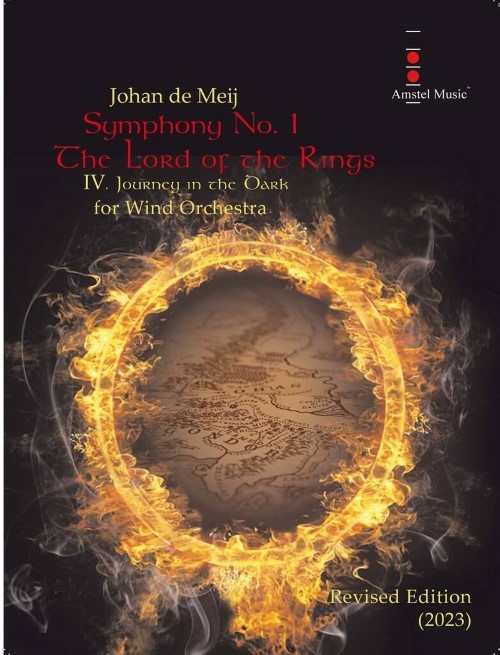 £132.00
£132.00Journey in the Dark (from Symphony No.1: The Lord of the Rings) (Concert Band - Score and Parts) - De Meij, Johan
Revised 2023 editionJohan de Meij's first symphony The Lord of the Rings is based on the trilogy of that name by J.R.R. Tolkien. This book has fascinated many millions of readers since its publication in 1955. The symphony consists of five separate movements, each illustrating a personage or an important episode from the book. The fourth movement describes the laborious journey of the Fellowship of the Ring, headed by the wizard Gandalf, through the dark tunnels of the Mines of Moria. The slow walking cadenza and the fear are clearly audible in the monotonous rhythm of the low brass, piano and percussion. After a wild pursuit by hostile creatures, the Orks, Gandalf is engaged in battle witha horrible monster, the Balrog, and crashes from the subterranean bridge of Khazad-D m in a fathomless abyss. To the melancholy tones of a Marcia funebre, the bewildered Companions trudge on, looking for the only way out of the Mines, the East Gate of Moria.Duration: 9.00
Estimated dispatch 7-14 working days
-
 £132.00
£132.00Lothlorien (from Symphony No.1: The Lord of the Rings) (Concert Band - Score and Parts) - De Meij, Johan
Revised 2023 editionJohan de Meij's first symphony The Lord of the Rings is based on the trilogy of that name by J.R.R. Tolkien. This book has fascinated many millions of readers since its publication in 1955. The symphony consists of five separate movements, each illustrating a personage or an important episode from the book. The second movement is an impression of Lothlorien, the elvenwood with its beautiful trees, plants, exotic birds, expressed through woodwind solos. The meeting of the Hobbit Frodo with the Lady Galadriel is embodied in a charming Allegretto; in the Mirror of Galadriel, a silver basin in the wood, Frodo glimpses three visions, the last of which, a large ominous Eye, greatly upsets him.Duration: 7.45
Estimated dispatch 7-14 working days
-
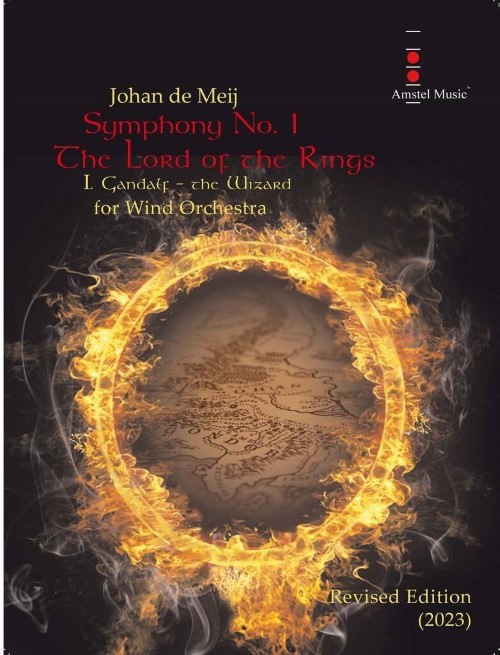 £132.00
£132.00Gandalf (from Symphony No.1: The Lord of the Rings) (Concert Band - Score and Parts) - De Meij, Johan
Revised 2023 editionJohan de Meij's first symphony The Lord of the Rings is based on the trilogy of that name by J.R.R. Tolkien. This book has fascinated many millions of readers since its publication in 1955. The symphony consists of five separate movements, each illustrating a personage or an important episode from the book. The first movement is a musical portrait of the wizard Gandalf, one of the principal characters of the trilogy. His wise and noble personality is expressed by a stately motif which is used in a different form in movements IV and V. The sudden opening of the Allegro vivace is indicative of the unpredictability of the grey wizard, followed by a wild ride on his beautiful horse, Shadowfax.Duration: 6.30
Estimated dispatch 7-14 working days
-
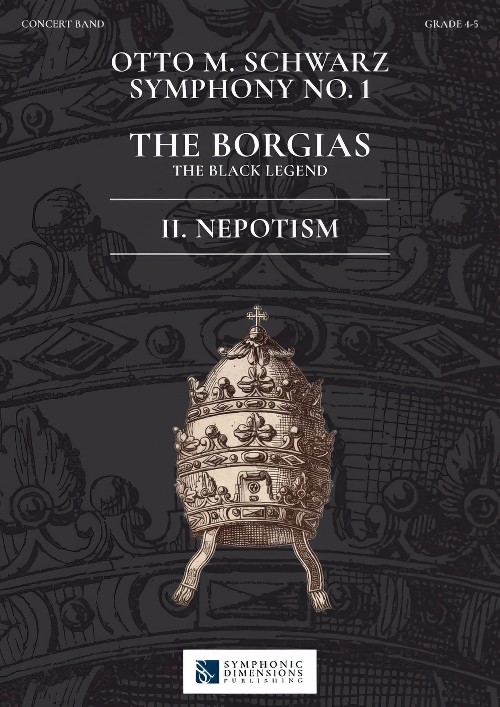 £148.99
£148.99Nepotism (Movement II from Symphony No.1, The Borgias) (Concert Band - Score and Parts) - Schwarz, Otto M.
A sinister legend hangs over the Borgia family, a legend of corruption, abuse of power, orgies, sex and murder. These rumours proliferated especially during the papacy of Alexander VI, a descendant of the family, who was even called the Antichrist. On his death, contemporary witnesses reported that the devil himself prowled around the death chamber and a black dog run along the corridors of the Vatican as his emissary. One might say that this Borgia pope, who ruled together with his family with the greatest brutality, became demonised. Unscrupulousness, poison-toting, incest and other malice are to this day the hallmarks of this pontiffNepotism: Rodrigo Borgia was elected Pope on 11 August 1492. From the very start, the new pope was prepared to use any means to eliminate his opponents, either through the infamous Borgia poison or by excommunication and execution. His son Cesare, who wanted little to do with the church, was appointed cardinal against his will. Alessandro Farnese, broth of Giulia Farnese, the Pope's mistress, also became a cardinal. Numerous Spaniards were brought into the country and were appointed to ecclesiastical posts. This infuriated the opponents of Alexander VI. The Dominican Girolamo Savonarola from Florence demanded the removal of the Pope. He was tortured and banned. Giuliano della Rovere wanted to convene councils to depose the Pope, which Alexander managed to prevent through artful political manoeuvrings. Through great brutality, brilliant political skill and power games, this pope was able to achieve his goal of leaving for his children a great legacy. Alexander VI constantly changed his allies and always acted unscrupulously to improve his financial situation and expand his sphere of influence. At the centre of the second movement of this work is the medieval hymn Dies Irae (Day of Wrath), which acts as a warning in the background condemning the Pope's actions.Duration: 9.15
Estimated dispatch 7-14 working days
-
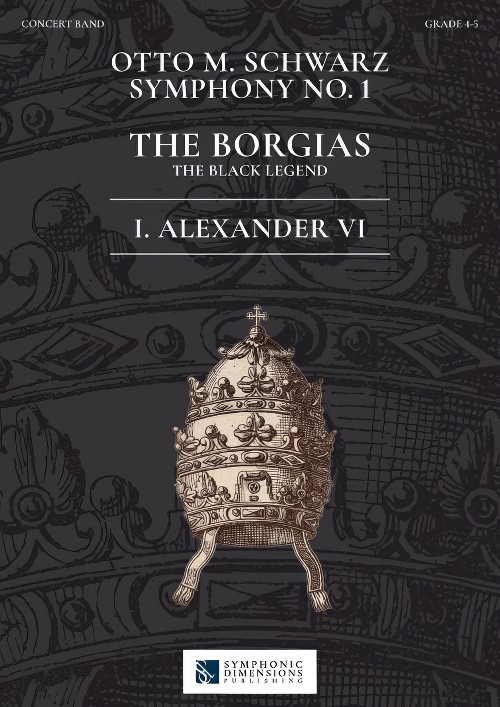 £148.99
£148.99Alexander VI (Movement I from Symphony No.1, The Borgias) (Concert Band - Score and Parts) - Schwarz, Otto M.
The Borgia family is the subject of a so-called black legend, a pejorative term that has been used since the Middle Ages to refer to Spain and Spaniards. The Borgias' black legend is one of corruption, abuse of power, orgies, sex and murder. These rumours spread especially during the reign of Pope Alexander VI, a member of the family. Alexander was even referred to as the Antichrist. According to eyewitnesses, when he died Satan prowled the death chamber and a black dog, an envoy of the Devil, ran up and down the aisles of the Vatican. The brutal rule of Pope Alexander and his family led to a kind of demonization of the Borgia family. But it is precisely the lack of scruples, the brewing of poisons, the incest and various cruelties that continue to hold a certain fascination for us.Alexander VI: Rodrigo Borgia was born in 1431 near Valencia. He studied law in Bologna and, through his uncle Pope Calixtus III, he rose through the church hierarchy. As vice-chancellor of the Holy Roman Catholic church, he became one of the richest men in Europe. As a cardinal he fathered four children who he later legitimised when he became pope. His election to the papacy was funded by the sale of offices, extortion and bribes of all kinds. Through an alliance with Ascanio Sforza he was elected pope on August 11 1492 and named himself from then on Alexander VI, an allusion to Alexander the Great.Duration: 9.30
Estimated dispatch 7-14 working days
-
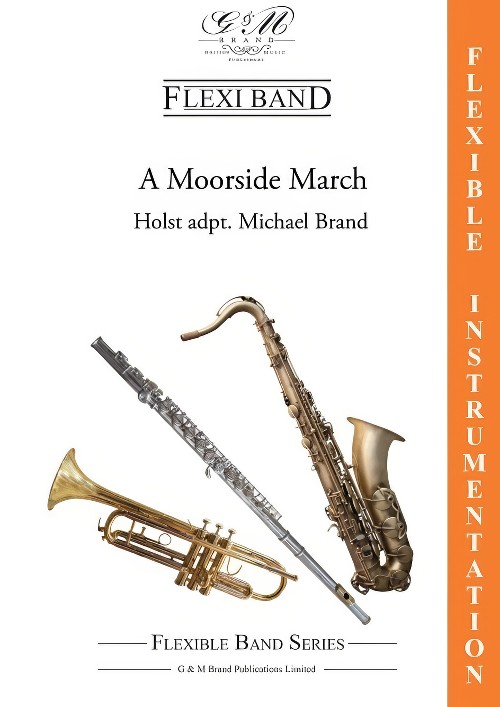 £49.50
£49.50A Moorside March (Flexible Ensemble - Score and Parts) - Holst, Gustav - Brand, Michael
Holst composed A Moorside Suite for Brass Band in 1928. It is in three movements, this March being preceded by a Scherzo and Nocturne. It is an extraordinary mature work for band from a master composer. There is very little fortissimo writing and there are no semiquavers at all. Instead, Holst has written clean melodic lines with each part being woven into a texture based on the modal lines of English folk music; but these represent its stylistic origin rather than using actual folk tunes as in Holst's earlier band writing. The March is stirring and flowing and is an ideal standalone piece to open or close any concert or festival programme. Duration: 4.15
Estimated dispatch 7-14 working days
-
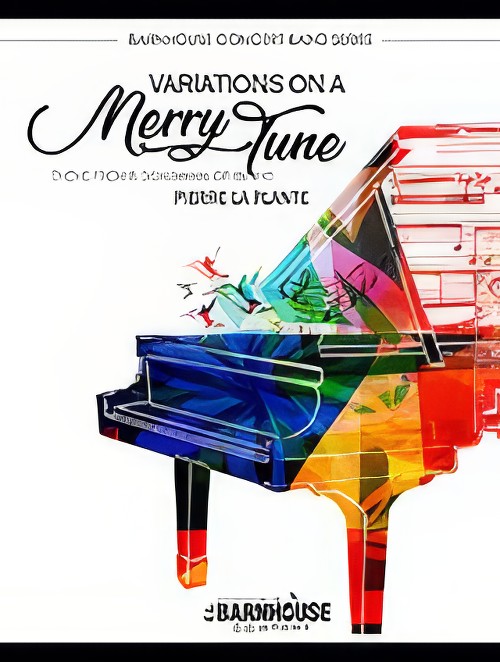 £79.00
£79.00Variations on a Merry Tune (Concert Band - Score and Parts) - La Plante, Pierre
Theme from R. Schumann, Op. 68 No.10. The creative genius of Pierre La Plante has never been better showcased than with "Variations On A Merry Tune." Based on a theme from Robert Schumann, known variously as "The Jolly Farmer" and "The Happy Farmer's Return From Work," this delightful work will bring smiles to all! Pierre takes this cheery tune all throughout the ensemble, creating opportunities for every section to shine. A charming selection for concert band, and a wonderful audience pleaser as well. Our highest recommendation! Duration: 5.30
Estimated dispatch 7-14 working days
-
 £50.00
£50.00The Wand of Youth, Suite No.1 - VII. Fairies and Giants (Concert Band - Score and Parts) - Elgar, Edward - Noble, Paul
The Wand of Youth suites, subtitled Music to a Child's Play, were written in 1869 when Elgar was only twelve years old, music written for a play and acted by the Elgar children for a private family theatrical production. He noted the tunes down in a sketchbook and in 1907, forty years later, he rearranged with only minor changes and orchestrated them as the two suites titled The Wand of Youth, Suite Nos. 1 and 2. Although The Wand of Youth suites date from Elgar's mature years, he insisted on calling it Opus 1, because he wrote these pieces originally for piano many years earlier.
Estimated dispatch 7-14 working days
